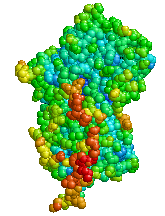
Photo from wikipedia
Abstract Nicotinamide mononucleotide adenylyltransferase 2 (NMNAT2) is an endogenous axon maintenance factor that preserves axon health by blocking Wallerian‐like axon degeneration. Mice lacking NMNAT2 die at birth with severe axon… Click to show full abstract
Abstract Nicotinamide mononucleotide adenylyltransferase 2 (NMNAT2) is an endogenous axon maintenance factor that preserves axon health by blocking Wallerian‐like axon degeneration. Mice lacking NMNAT2 die at birth with severe axon defects in both the peripheral nervous system and central nervous system so the complete absence of NMNAT2 in humans is likely to be similarly harmful but probably rare. However, there is evidence of widespread natural variation in human NMNAT2 mRNA expression so it is important to establish whether reduced levels of NMNAT2 have consequences that impact health. While mice that express reduced levels of NMNAT2, either those heterozygous for a silenced Nmnat2 allele or compound heterozygous for one silenced and one partially silenced Nmnat2 allele, remain overtly normal into old age, we now report that Nmnat2 compound heterozygote mice present with early and age‐dependent peripheral nerve axon defects. Compound heterozygote mice already have reduced numbers of myelinated sensory axons at 1.5 months and lose more axons, likely motor axons, between 18 and 24 months and, crucially, these changes correlate with early temperature insensitivity and a later‐onset decline in motor performance. Slower neurite outgrowth and increased sensitivity to axonal stress are also evident in primary cultures of Nmnat2 compound heterozygote superior cervical ganglion neurons. These data reveal that reducing NMNAT2 levels below a particular threshold compromises the development of peripheral axons and increases their vulnerability to stresses. We discuss the implications for human neurological phenotypes where axons are longer and have to be maintained over a much longer lifespan.
Journal Title: Human Molecular Genetics
Year Published: 2019
Link to full text (if available)
Share on Social Media: Sign Up to like & get
recommendations!